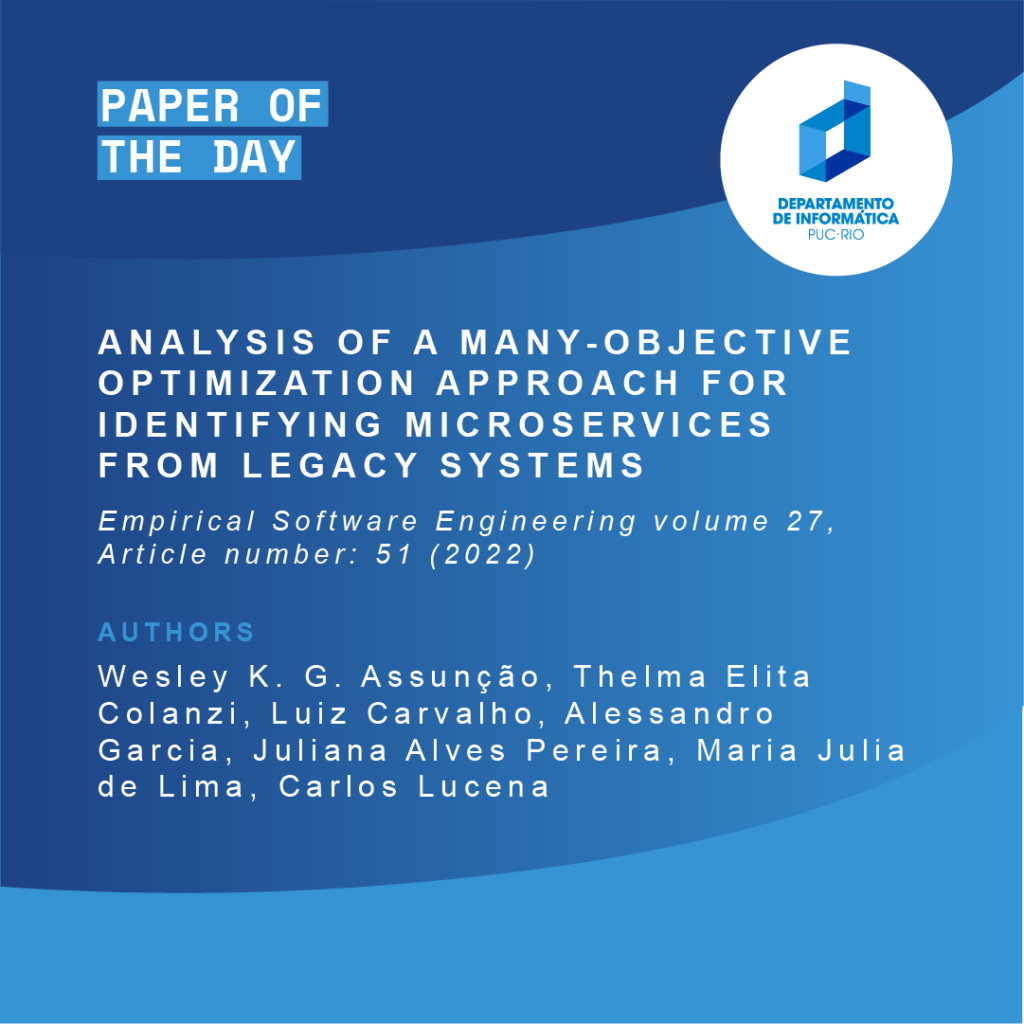 #paperoftheday
#paperoftheday
Tittle:
Analysis of a many-objective optimization approach for identifying microservices from legacy systems
Venue:
Empirical Software Engineering volume 27, Article number: 51 (2022)
Authors: Wesley K. G. Assunção, Thelma Elita Colanzi, Luiz Carvalho, Alessandro Garcia, Juliana Alves Pereira, Maria Julia de Lima, Carlos Lucena
Abstract:
The expensive maintenance of legacy systems leads companies to migrate such systems to modern architectures. Microservice architectural style has become a trend to modernize monolithic legacy systems. A microservice architecture consists of small, autonomous, and highly-independent services communicating by using lightweight network protocols. To support the designing of microservice architectures, recent studies have proposed either single or multi-objective approaches. In order to improve the effectiveness of existing approaches, we introduced toMicroservices that is a many-objective search-based approach to aid the identification of boundaries among services. In previous studies, we have focused on a qualitative evaluation of the applicability and adoption of the proposed approach from a practical point of view, thus the optimization process itself has not been investigated in depth. In this paper, we extend our previous work by performing a more in-depth analysis of our many-objective approach for microservice identification. We compare our approach against a baseline approach based on a random search using a set of performance indicators widely used in the literature of many-objective optimization. Our results are validated through a real-world case study. The study findings reveal that (i) the criteria optimized by our approach are interdependent and conflicting; and (ii) all candidate solutions lead to better performance indicators in comparison to random search. Overall, the proposed many-objective approach for microservice identification yields promising results, which shed light on insights for further improvements.
More in:
https://link.springer.com/article/10.1007/s10664-021-10049-7


